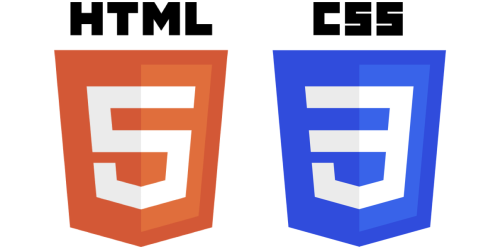Creating content in CSS (Cascading Style Sheets) is not a common practice, as CSS is primarily used for styling and layout of web pages rather than for creating textual content. However, if you’re looking to write a detailed guide or explanation about CSS, it’s certainly possible to do so. Below is an example of how you might structure such content:
Cascading Style Sheets (CSS): A Comprehensive Guide
Introduction to CSS
Cascading Style Sheets (CSS) is a stylesheet language used to describe the presentation of a document written in HTML or XML. CSS describes how elements should be rendered on screen, on paper, in speech, or on other media. It gives web developers the power to control layout, colors, fonts, and other visual aspects of a web page.
History of CSS
CSS was first proposed by Håkon Wium Lie in 1994 and subsequently developed by Bert Bos. It was created to separate document content from its presentation, allowing developers more flexibility and control over the appearance of web pages. The first CSS specification, CSS1, was published in 1996. Since then, CSS has gone through several revisions and updates, with CSS3 being the latest major version as of [current year].
Basic Syntax
CSS consists of a set of rules, each with a selector and a declaration block. The selector specifies which elements the rule applies to, and the declaration block contains one or more declarations separated by semicolons. Each declaration consists of a property and a value, separated by a colon.
selector {
property: value;
property: value;
/* More properties and values */
}
For example:
p {
color: blue;
font-size: 16px;
}
In this example, the selector is p, which selects all <p> elements, and the declaration block contains two declarations: one for the color property and one for the font-size property.
Selectors
- Element selectors: Select elements based on their tag name, e.g.,
pselects all<p>elements. - Class selectors: Select elements with a specific class attribute, e.g.,
.highlightselects all elements withclass="highlight". - ID selectors: Select a single element with a specific id attribute, e.g.,
#headerselects the element withid="header". - Attribute selectors: Select elements based on their attributes, e.g.,
[type="text"]selects all elements withtype="text".
Properties and Values
CSS properties are the stylistic attributes you can apply to elements, such as color, font-size, margin, padding, etc. Each property accepts one or more values, which determine how the property should be applied. For example, the color property can accept color names (e.g., red, blue), hexadecimal color codes (e.g., #ff0000, #0000ff), RGB values (e.g., rgb(255, 0, 0), rgb(0, 0, 255)), etc.
Box Model
The CSS box model describes the rectangular boxes that are generated for elements in the document tree. Each box has content, padding, border, and margin areas. Understanding the box model is crucial for layout design in CSS.
Layout Techniques
CSS offers several layout techniques for arranging elements on a web page, including:
- Floats: Elements can be floated to the left or right, allowing text and inline elements to wrap around them.
- Flexbox: A one-dimensional layout model that allows elements to be aligned and distributed within a container.
- Grid: A two-dimensional layout model that allows elements to be placed in rows and columns.
Responsive Design
With the proliferation of mobile devices, responsive design has become increasingly important. CSS provides several features to create responsive layouts, such as media queries, flexible units (em, rem, vw, vh), and viewport-relative units (vw, vh, vmin, vmax).
Conclusion
In conclusion, CSS is an essential skill for anyone involved in web development, and mastering it can greatly enhance your ability to create beautiful and functional websites.
Yashoraj Infosys best website design and development company in patna bihar, top software company in patna bihar, best web design company in patna, best website design company in patna, top software company in patna, top 10 it companies in bihar, best website design company in patna
Our Web Applications
Hospital Management System | Pharmacy Management System | Tour and Travel portal with admin panel | Ecommerce portal (single vendor) + admin panel | Ecommerce portal (multiple vendor) + admin panel | News portal with admin panel | CRM software pro version | HR management system | Online exam web portal + admin panel | Online classes and tutorial web portal + admin panel | Online job portal + admin panel | School management system pro version | Matrimonial web portal + admin panel | Point of sales system (POS) | POS system for restaurants | Gym Management and Fitness Management, Courier and Logistics Management System | Advocate Management System | Real Estate management system | Advance Support Ticket System | Project Management software (ultimate version)
#ResponsiveWebDesign #YashorajInfosys #WebDevelopment #DigitalPresence #MobileFriendly #SEO #UserExperience #OnlineSuccess #websitedevelopmentcompanyinpatna #bestwebsitedesigncompanyinpatna #topsoftwarecompanyinpatnabihar, #bestwebdesigncompanyinpatna, #bestwebsitedesigncompanyinpatna, #topsoftwarecompanyinpatna, #top10itcompaniesinbihar, #bestwebsitedesigncompanyinpatna #DigitalMarketing #YashorajInfosys #OnlinePresence #SocialMedia #ContentMarketing #SEO #PPC #DataDrivenMarketing #Innovation #SEO #YashorajInfosys #SmallBusiness #OnlineVisibility #DigitalMarketing #KeywordResearch #ContentCreation #LocalSEO #SearchEngineOptimization #MobileAppDevelopment #YashorajInfosys #NativeApps #HybridApps #iOS #Android #ReactNative #Flutter #AppDevelopment #DigitalTransformation #EcommercePlatform #YashorajInfosys












